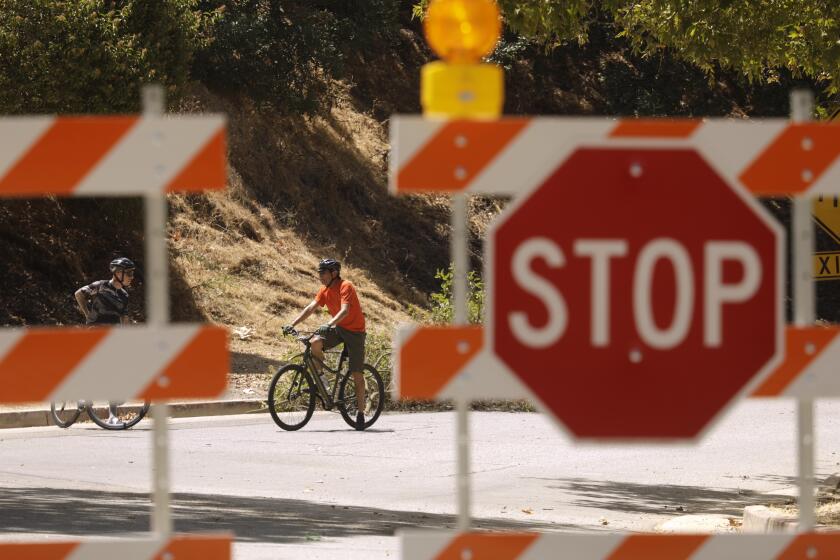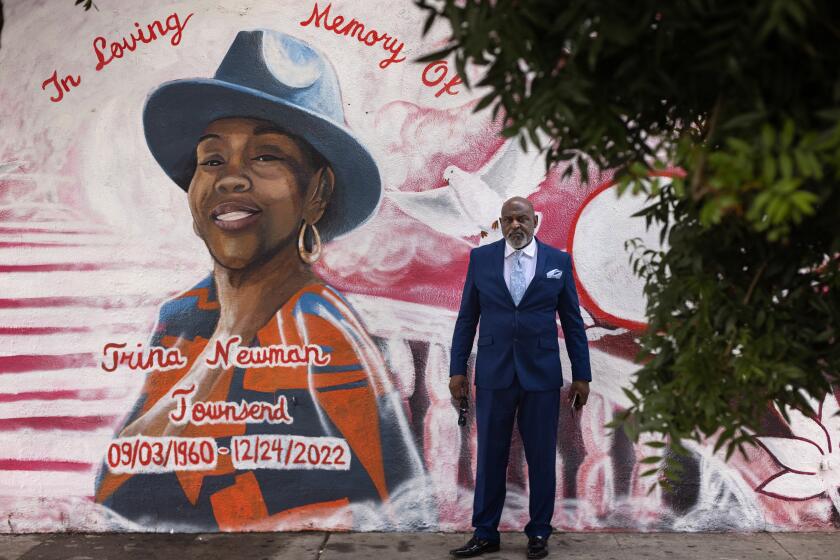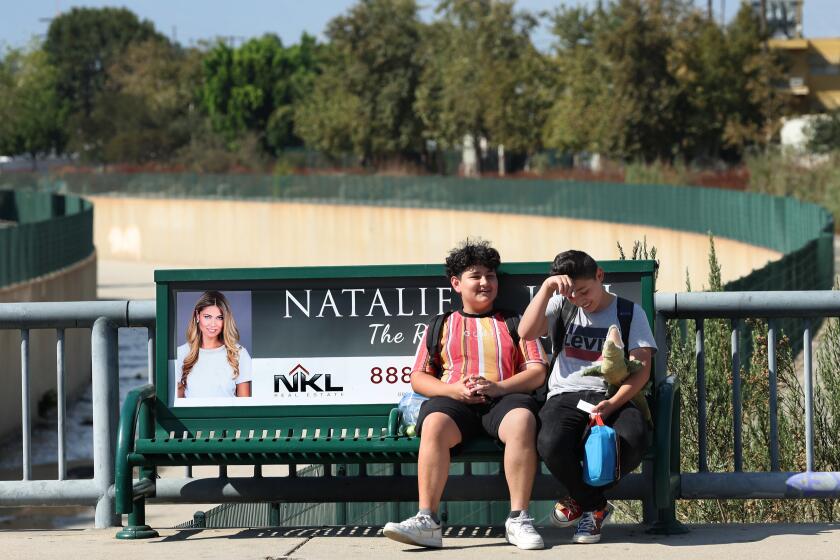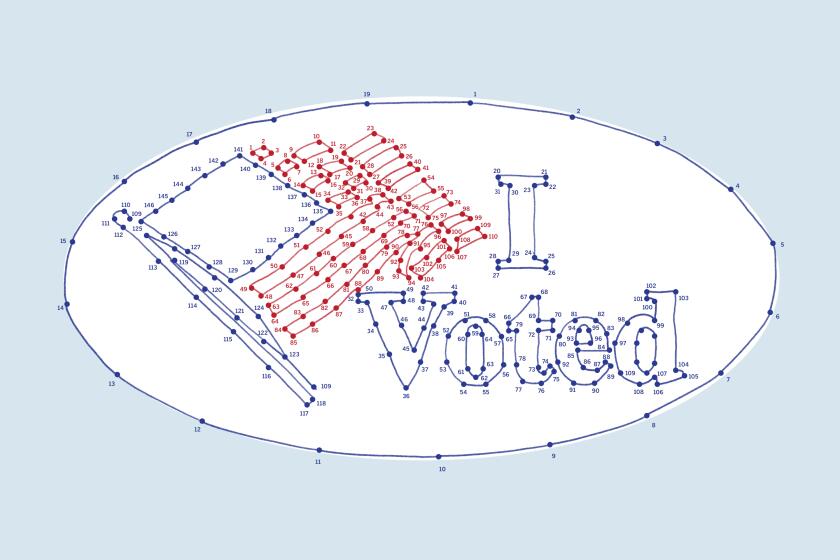The document — called Mobility Plan 2035 — touches almost every corner of the sprawling city. One of its top goals is to eliminate traffic deaths and ensure that 90% of Angelenos live within half a mile of a protected bicycle lane, path or streets that are otherwise “neighborhood enhanced” to be calm and safe, and within a mile of a public transit network.
Among the many projects the plan identifies are protected bike lanes that would run on Sunset and Venice boulevards, and a bus lane connecting Whittier Boulevard in Boyle Heights to 6th Street downtown, then to Wilshire Boulevard west of the 110 Freeway.
The plan also identifies about 80 miles of roads where efficient vehicle travel would be the priority.
When it was adopted, the mobility plan represented a departure from previous street planning, by focusing on ways to slow down cars in certain parts of the city and make safer the increasingly deadly Los Angeles streets — where a pedestrian was killed nearly every other day last year.
Measure HLA would mandate the installation of 200 miles of bus lanes — some operating 24 hours a day, others running only during rush hour — and more than 600 miles of bicycle lanes, including on Ventura Boulevard and along Soto Street on the Eastside.
If the ballot measure passes, residents could sue over instances when Los Angeles fails to implement the plan. And to make sure city officials are doing the task, the measure calls for a public portal where residents can check up on its progress.
Foes say the changes will clog traffic, making it more difficult for emergency vehicles to pass. Opponents also warn that, because the measure provides no new funding for transportation improvements, the city will likely need to shelve some projects while prioritizing the work mandated by HLA.
An analysis by City Administrative Officer Matt Szabo found the bicycle and pedestrian portions of the plan would cost the city $3.1 billion over a decade, complicating the city’s effort to repair its streets and sidewalks. The city already has 7,700 outstanding sidewalk repair requests, said Szabo, who has not taken a position on the measure itself.
Street design in Los Angeles, such as adding bike paths, is often prioritized based on funding and political will. Measure HLA would prioritize the completion of projects in the Mobility Plan, according to Sharon Tso, the city’s chief legislative analyst.
Tso noted that the measure doesn’t deal with any environmental or public review process. And critics complain that it does not take into account community needs, relying instead on the mobility plan to determine which projects are done and when.
































